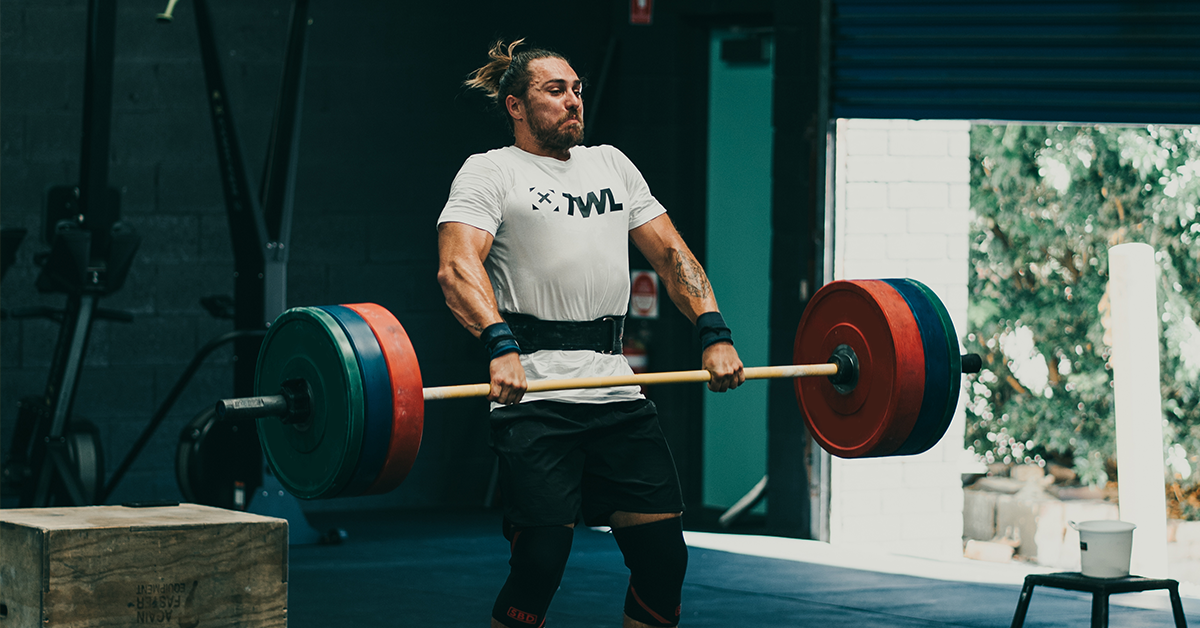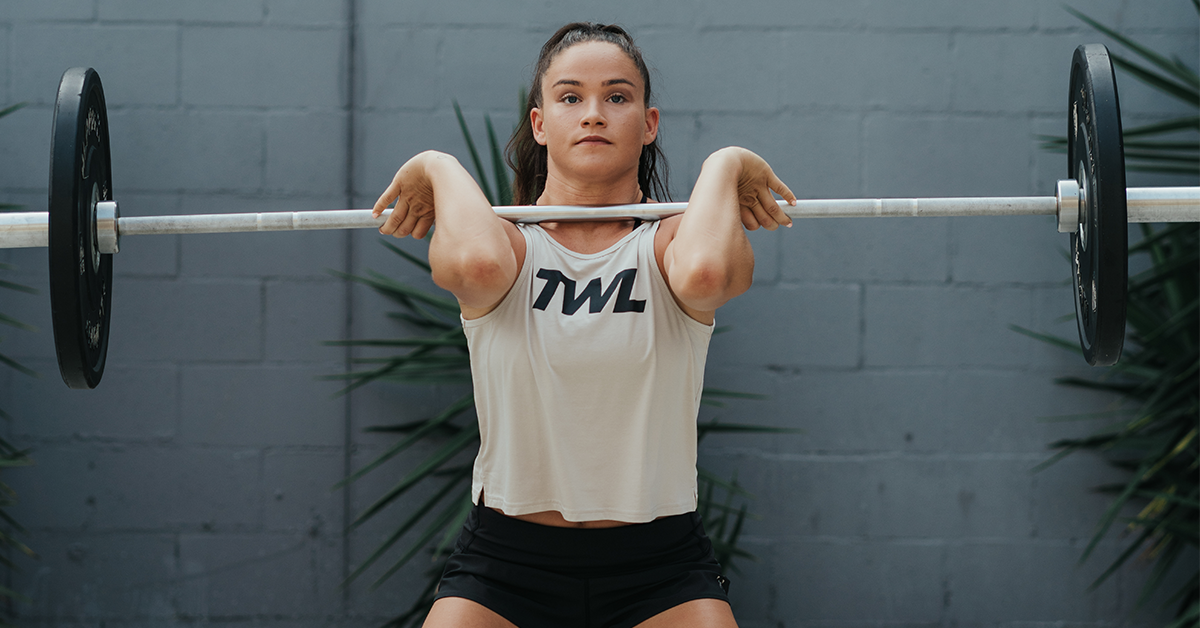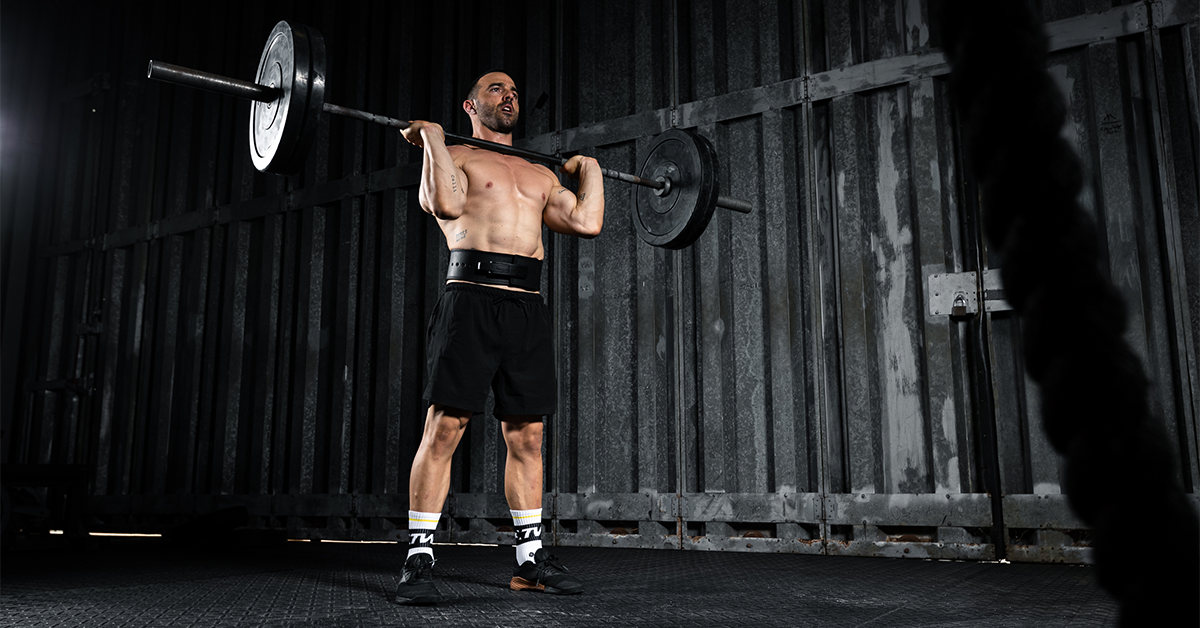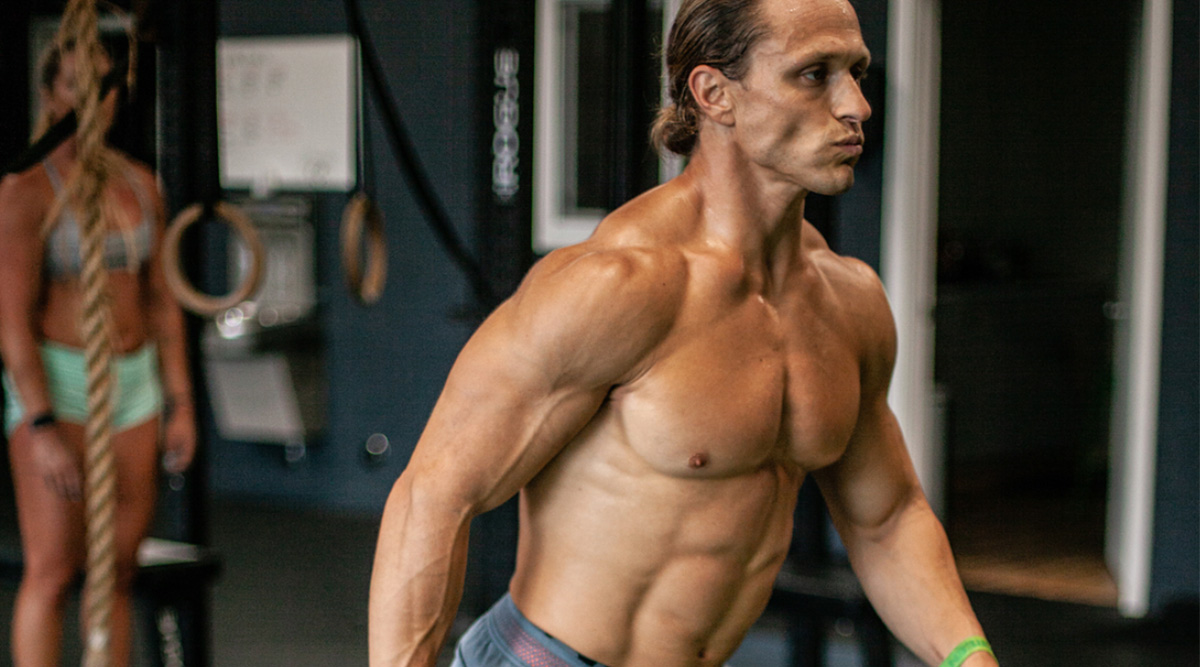There are countless variations of the almighty Olympic weightlifting clean. One such way to put a spin on the lift is with the hang clean. In this blog, we’re going to deep dive into:
- What the hang clean is.
- How to do it.
- The muscles it works.
- Benefits.
Let’s go!
Wait, What is a Hang Clean, Anyway?
You know a “regular” clean to be one where the barbell starts on the ground. In a hang clean, you begin in a standing position, the barbell already in your hands. But why is it called a hang clean? The word “hang” refers to where the barbell is. It’s literally hanging.
Now, where exactly you start your lift is up to you. Some people say that a hang clean means the barbell starts somewhere between your knees and hips. However, as long as the barbell isn’t on the ground, it’s technically in a hang position. This means you can perform a hang clean with the barbell:
- Hovering an inch off the ground.
- Mid-shins.
- Just below your knees.
- Just above your knees.
- In the middle of your quads.
- In your hip crease.
How to Do a Hang Clean
The lift itself doesn’t change. What we mean is that you’re still performing a clean. Regardless of where the barbell starts, you must use your strength and power to get the bar into the front rack position, ride it down into a squat, and stand to complete the rep.
While the beginning of your lift will vary depending on where you hold the bar, the steps after that will be the same.
- Stand with the bar approximately an inch off your shins, feet about shoulder-width apart.
- Bend at the knees and crease at the hips to meet the barbell with your hands. You should be about a thumb’s length from the knurling. Use the hook grip.
- Grip the barbell and stand up all the way.
- Lower the barbell to your desired hang position.
- Extend through your feet, legs, and hips to generate power into the barbell.
- Keeping the barbell close to your body, shrug it up and semi-squat under it. Think of whipping your elbows around the bar.
- Ride the barbell down into a full squat. Or, if you’re doing a hang power clean, simply stand up all the way. (Don’t forget to read our ultimate guide to the power clean!)
- If you did a full squat clean, stand up out of your squat. This completes one rep.
Here’s a hang clean performed from above the knee.
The hang clean can take a toll on your body. You might find wrist wraps, knee sleeves, and finger tape helpful for giving you the support and protection you need.
Shop Now
Hang Clean Muscles Worked
Where can you expect to build strength if you regularly rehearse the hang clean? It’s excellent for targeting your posterior chain. However, you can also expect your upper body to get one heck of a workout. This includes your:
- Traps.
- Deltoids.
- Quads.
- Forearms.
- Core.
Hang Clean Benefits
It’s not just the muscles worked that make hang cleans worthy of your time and attention. They offer many other benefits, as well.
- They teach you to improve explosiveness and power. This translates to many other things you do in the gym, including other lifts, burpees, box jumps, and handstand push-ups.
- They demand speed. Since your pull is cut short, you have to be prepared to get under the bar with less notice.
- Your technique is even more important. You might think that because the lift takes less time, you don’t have to be as precise. In actuality, it’s the opposite.
3 Common Mistakes in the Hang Clean
The hang clean is a tricky one! Here are a few of the more common mistakes athletes make.
Not Finishing the Pull
Because the lift is shorter, athletes tend to feel rushed. So, they rush the movement. This often means that don’t finish the pull and extend all the way at the top of the lift.
But reaching full extension at the top — meaning your body is straight — will help you get more height on the barbell.
Throwing the Barbell onto the Shoulders
The barbell can feel even heavier in a hang clean. And in a way, it is. You likely won’t be able to lift as much from the hang position as you can from the floor.
But athletes will sometimes respond by trying to “thrust” the barbell onto their shoulders and use pure momentum to get it there. What often happens is that it crashes onto them, and their stability takes a serious hit.
Letting the Barbell Drift from the Body
Whatever kind of clean you’re doing (or snatch, for that matter), you want the barbell to stay as close to your body as possible. If the bar drifts away from you, either (1) you have to jump forward to meet it, or (2) it’s going to swing out in a loop, coming back toward you with too much force. (This is especially problematic in the snatch, where you can miss the lift behind you.)
Power Clean vs Hang Clean
People who are newer to the Olympic lifts sometimes confuse the power clean and the hang clean. They do have one thing in common: They are “shorter” lifts than your full squat clean.
In the power clean, you don’t squat all the way down. After getting under the barbell, you simply straighten your legs until you’re at full extension.
In the hang clean, the barbell starts somewhere above the ground. You can choose to squat all the way down or perform a hang power clean.
Is the Hang Clean Better or Worse than a Full Clean?
Neither! While a full clean will likely build more strength overall, the hang clean allows you to target the weakest points of your pull. And a strong pull is vital to every type of clean. It’s also great for learning how to lift faster and more precisely.
There you have it! What are you waiting for? Get to work!
Want to take your lifts to the next level? You’re going to need a high-quality pair of weightlifting shoes. Shop our collection now!

















